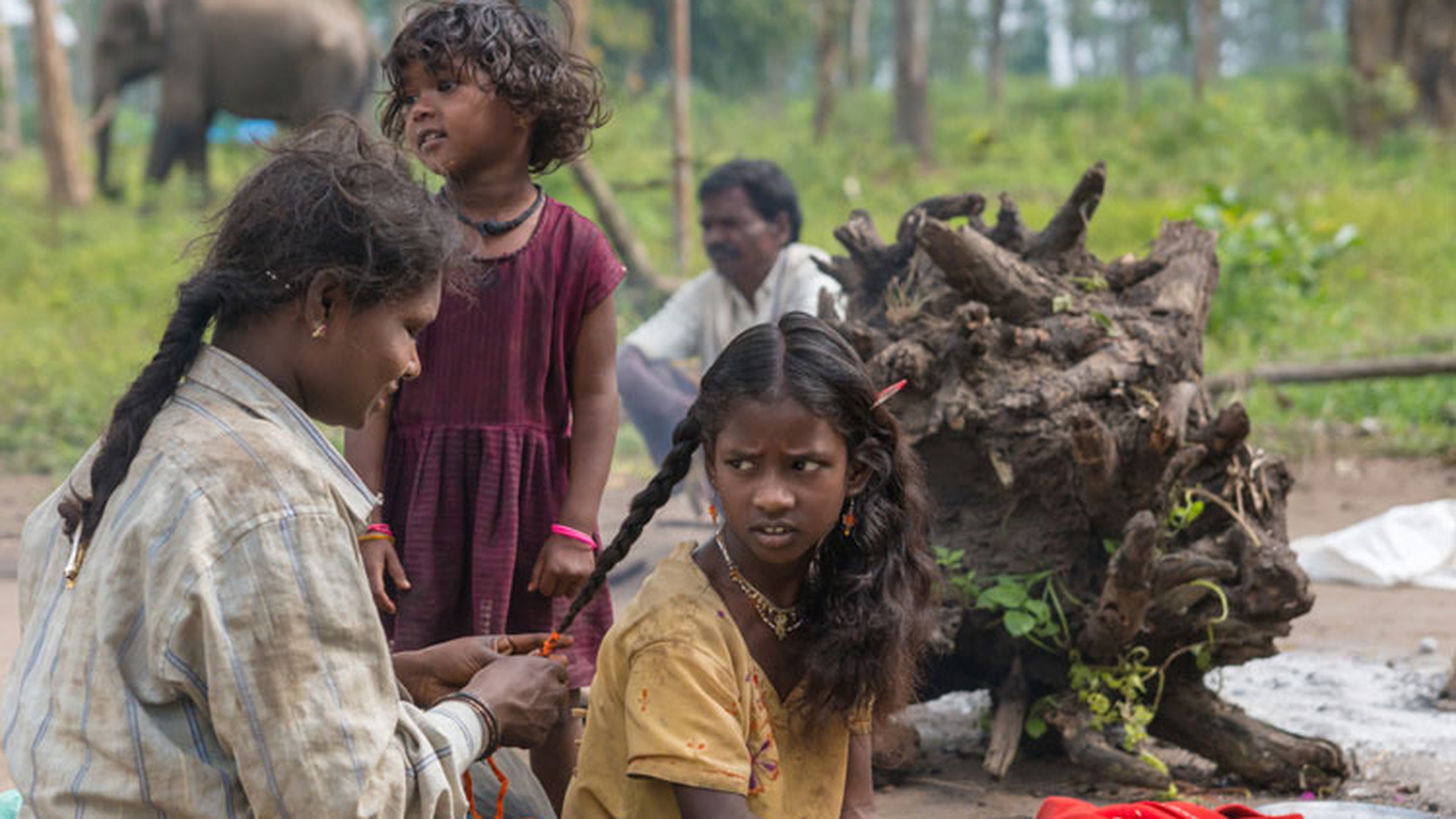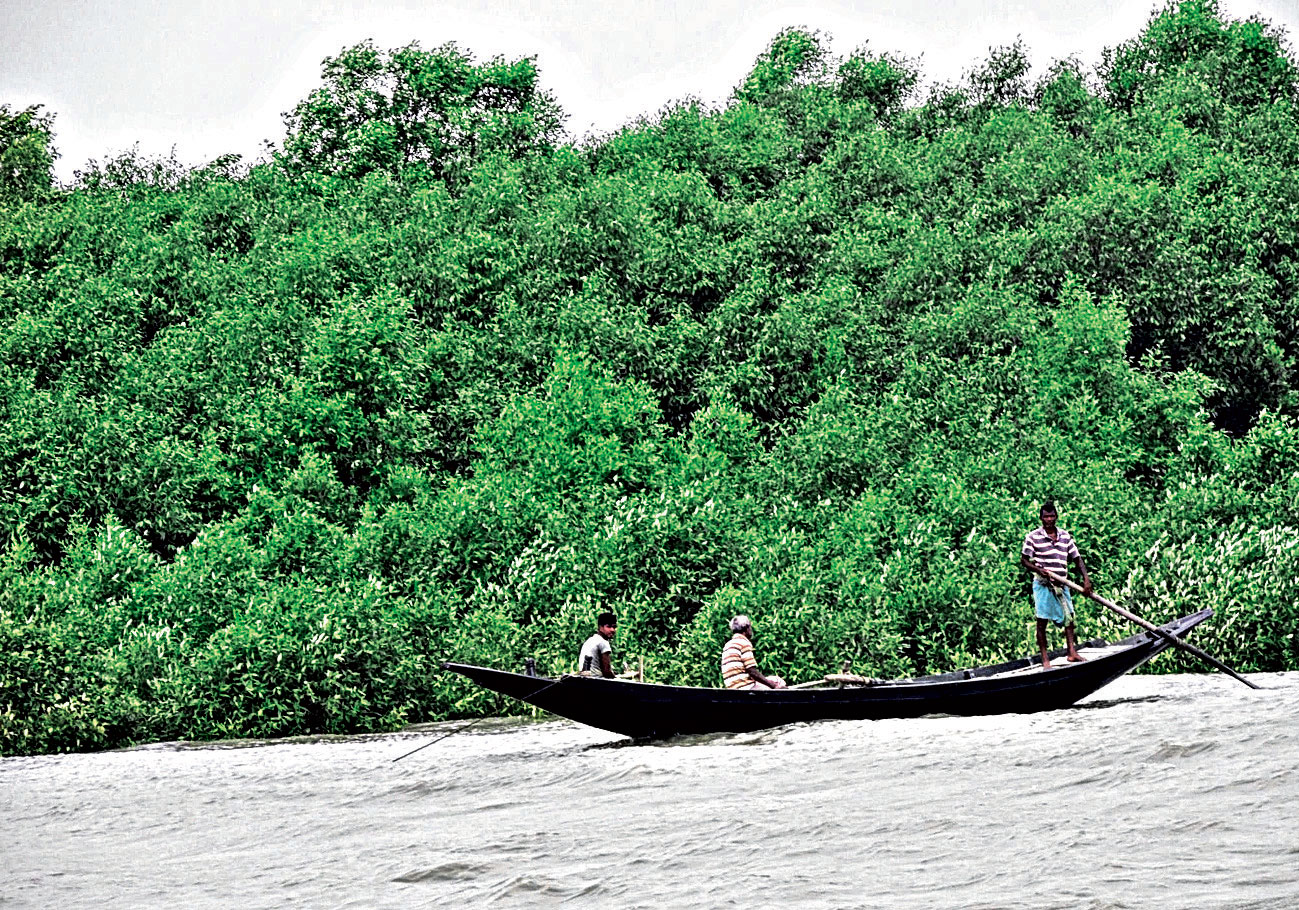Immediately after the schedule of the seventeenth Lok Sabha election was declared, a news item appeared that said dwellers of the mangrove forests of the Sunderbans have demanded immediate implementation of the Forest Rights Act in the islands and declared that they would vote for candidates who support their cause. This demand was articulated by the Jana Sramajibi Manch, claiming to be an organization of fishermen and forest dwellers. The mangrove forests of the Sunderbans have no dwellers; nevertheless the JSM must be commended for spotting an opportunity and articulating the demands of forest-fringe dwellers who depend on ecosystem resources for livelihood.
Forty-six revenue villages are along the current forest fringe in the Sunderbans. These were settled at different times during the colonial period except Jharkhali in Basanti block that came to be settled post-Independence. Most of the populations in these villages would not qualify as ‘forest dwelling scheduled tribes’ and, therefore, it is important to know the definition of ‘other traditional forest dwellers’ under the FRA. The term, OTFD, means any member or community who has for at least three generations prior to the 13th day of December 2005 primarily resided in and who depend on the forest or forests land for bona fide livelihood needs. Here, ‘generation’ means a period of 25 years. All the residents of forest-fringe villages that came to be settled after 1930, therefore, would not qualify under the FRA. Perusal of land revenue records should help identify the villages that would qualify under the FRA.
Supposing the list of villages that qualify under the FRA was unambiguous, could our parliamentarians be of help to the forest-fringe dwellers? They could, if they are well informed about their constituency and constituents and have an understanding of the FRA. How have our parliamentarians representing parts of the Sunderbans fared on these counts? One way is to look up the Parliament Digital Library. It is an information resource unlike any; debates of Lok Sabha, from the first to the sixteenth, are already placed in this portal.
West Bengal has 42 parliamentary constituencies, each comprising seven assembly constituencies. None of our parliamentarians actively participated while the forest rights bill was being debated in the fourteenth Lok Sabha. Since its enactment, only one MP from West Bengal raised a question on the subject in 2010.
Oddly, the Sunderban region comprising 14 assembly constituencies is represented in parts by the members of parliament of Basirhat, Jaynagar, and Mathurapur. In the sixteenth Lok Sabha, the Mathurapur MP did not participate at all, while the Jaynagar MP came across as active with knowledge of her constituency. Both have been renominated by their party for the seventeenth Lok Sabha. The Basirhat MP’s participation was fair but he has been replaced by a young actress. That leaves only the Jaynagar MP, who could help the forest-fringe dwellers but she does not get to represent such residents from three assembly constituencies. Under the circumstances, how do we get our parliamentarians to better represent the Sunderban region? Should the electors not have a say in who gets nominated to represent them? If they did, it is unlikely that the sitting Mathurapur MP would get nominated again or a young actress would get a chance to represent Basirhat. For the electors to be able to decide on party nominees for a constituency, either a major political party has to adopt the system of primary election as in the United States of America, or the Representation of the People Act would have to be suitably amended. Primary election is an election conducted by public officers at public expense to select candidates to run for public office. Primaries function as a preliminary election whereby voters decide their party’s candidates. As of now, neither of the options appears on the Indian democratic horizon. Then, why not reorganize the region into two parliamentary constituencies instead of the existing three? This seems more plausible since constituency boundaries are meant to be readjusted after the 10-yearly census to reflect changes in population for which Parliament by law establishes an independent Delimitation Commission made up of the chief election commissioner and two judges or former judges from the Supreme Court or high court. Through the process of delimitation, the Sunderban region could be reorganized as two parliamentary constituencies comprising seven assembly constituencies each. One could include the predominantly island and forest-fringe constituencies like Sandeshkhali, Hingalganj, Gosaba, Basanti, Kultali, Patharpratima and Sagar, while the other, the rest.
Till such time that one or the other option becomes available, organizations fighting for recognition and the vesting of forest rights would do well to carefully peruse the FRA and the rules thereunder, and pursue the subdivisional-level committee and the district-level committee constituted under the FRA.













